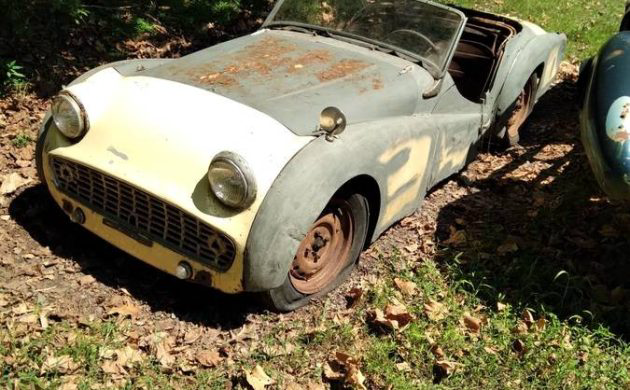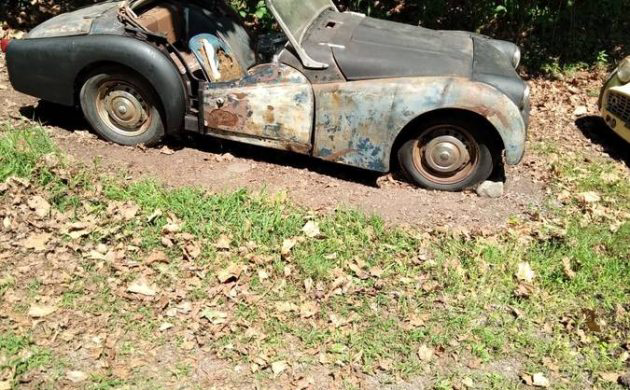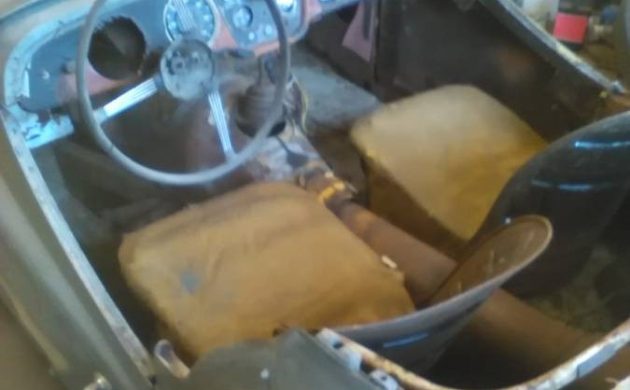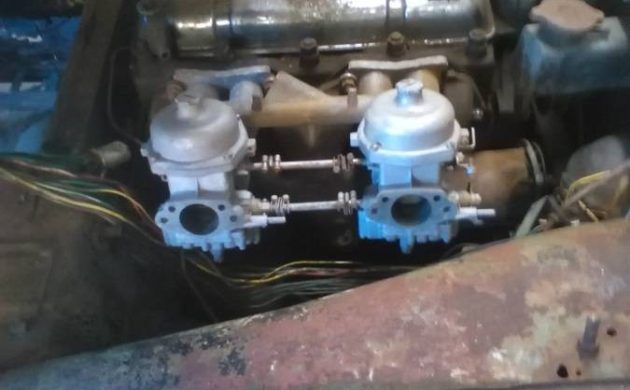
There are some cars that just never should be left outside. I think you could put all convertibles in that category. However, it seems that some cars are just made of steel that rusts with but a harsh word. Triumphs, specifically Triumph TR3s and their various variants, rust like it is their side hustle. Is there a point of no return regarding rust for certain cars? Take for example this pair of TR3As for sale on Craigslist in Hunlock Creek, Pennsylvania. One is a 1957 model, and one is a 1959 model, and both have been bitten hard by the tin worm. Can they be restored? Can one car be made of two? Or are these outdoors stored Triumphs destined to be donor cars for other restorations? Is the $2,900 asking price out of line for both cars? Thanks to Mitchell G. for the two Triumph tip!

Once again, I call upon a metallurgist to explain how some years of automobiles end up being absolute rust buckets while others seem to age quite well when exposed to the elements. Some notable rust buckets include 1957-1959 Chrysler products, first-generation Mustangs, 1976 General Motors products, and the cab corners of most pickups of the sixties and seventies. Maybe add to that the birdcage of C2 and C3 Corvettes. As for imports, all of the British imports and most of the earlier Datsuns struggled to make cars that would last for a long time under the onslaught of American seasons and road salting. Is it a case of the steel having too much iron? Or was the steel stamped too thin? A lack of undercoating? Maybe all of the above?

Of all of the cars notorious for rust, Triumph TR3s are among the worst. That is a crying shame, as the styling on these cars is spectacular. Specifically, the dip in the doors combined with the flow of the fender lines made for a car that just looked right. The two cars you see here are stripped-down proof of just how pure of form this model is. You can also see in the picture above that rust has eaten away both panels where the rear fender meets the trunk. In the advertisement, the seller states that these cars would be a great father-and-son restoration project. They also mention that both are major projects, but restoration parts are available. One has to wonder how many parts would be needed for both the black 1959 TR3A and the yellow 1957 TR3A.

We are told that the black car’s frame is solid, and that the engine will turn over by hand almost all of the way. The seller suspects that there is a stuck valve. On the yellow car, the chassis will require what is described as “remedial work.” Its engine is currently sitting with oil in the cylinders, and it may turn after this soaking is allowed to take place. We are told that what you see in the pictures is what comes with the cars. Both cars come with clear Pennsylvania titles.

To the seller’s credit, the ad encourages prospective buyers to inspect both cars or perhaps have someone knowledgeable do the inspection for them. That is great advice, as it is easy to get starry-eyed over these two cars. Full restorations would likely be difficult, financially excessive, and time-consuming. There are a lot of parts and pieces that will need replacement or refurbishment. Most importantly, prospective buyers need to be realistic about their skills in dealing with rust.

Perhaps the glimpse of a TR3 with a full roll cage in the background of one of the pictures above is a hint as to what needs to happen to these cars. They may both make great foundations for race cars or maybe even a TR3 version of a street rod. Great things can happen when you are not encumbered with making a car factory correct. You could also argue that these cars have deteriorated to a point where saving them and making them roadworthy wouldn’t be considered a sin if you strayed off the stock path.

What do you think? What should be done with these cars? Why do Triumph TR3s rust so much? Please share your thoughts in the comments.








The crew at Cold War Motors would probably jump at that Traction Avant next to the building.
That Citroen is a very rare car as it’s what was known as a “Big Six” because it had a six cylinder engine, and it was big due to it’s having an extra window at the rear passenger seat. A club member, who was of French extraction, used to boast how rare it was. well, I have never seen another one but I have seen plenty of four cylinder “Light Fifteens” so he might just be right!
They’re not as rotty as the swaybacked Citroen – which looks beyond help, sadly.
I believe it’s not so much what the car is . but where the car is. Pennsylvania is one of the Eastern states that uses a LOT of salt on it’s roads. In days past it was not that unusual to be able to see clear through a car there in as little as two or three years. That would be a good reason to either not drive these cars in winter or put them in a museum or ??? whatever.
These cars would definitely not be candidates for restoration…yes, even for free. They do however seem to posses a few decent pieces. The evidence of the tin worm on the upper parts is just likely where he made his exit. The under parts he already ate. Reason being that the frames aren’t much thicker than the fenders and are rather soft to begin with.
Totally agree on the rust gremlin scenario. They are donor cars at best. I would guess at about $750 each.
A really good TR3 is a $25,000 car. Buy these two, add another $50,000 and yes, you’ll have a good $25,000 car and a pile of spare parts when you’re done . . . except the parts that are worn out and rusted on the parts car are going to be of little value in the end anyway. This is a hobby, a cash sucking hobby. Not a pair of viable cars. Buy the one on auction here instead!
Sadly, I feel that if a father/son buys this as a project together, they will be estranged from each other within the first week of bringing these home. If any can be salvaged; sell both cars for partsI
Isn’t the background car with the roll cage an MGA? Not trying to be picky. Good writeup on a pair of sad cars. Have driven a TR3 in the past….more fun than imaginable.
“The engine turns over by hand almost all the way…” Lost my coffee with that line…
worthless rust buckets
Very sad. As to post war British Steel, I was told by a metallurgist that it was a combination of reuse of low quality scrap iron (old war stuff) and just tired processing facilities.
Why would anyone replace SU carbs with Zenith Strombergs? Neither one is a 57 model as both have door handles and boot (trunk) lid handles. 57 did not have outside handles and had a small mouth. Rust-wise, these appear to be terminal. At least he’s not stuck with storage unit costs as I am with my one rusty and two disassembled cars, arrrrgh! I at least have two running engines out of four spares so if my finished car ever dies, I have a ready spare. Windscreen frames and stanchions are made of onobtainium and the transmissions and third members have value but these two have been drivers for the last time. Engines are infinitely rebuildable with readily available parts.
I have a degree in materials science and metallurgical engineering. There are a number of ways to prevent rust in steel. You can bond a sacrificial material like aluminum or tin to it, you can coat it to keep moisture and oxygen away from it, or you can add inert alloying elements to the steel like chromium. Bare steel is the cheapest option by far and that is why some auto manufacturers choose that.
My ’68 Chevelle, in NH, had bad, but fixeable rust, with Bondo, every 6 months (NH had twice a year inspections then, no holes allowed) at age 5. My ’69 Camaro on the other hand, lasted, with Bondo repairs to the skin, until killed by very bad rust underneath, at 14. But the interior of both was still perfect.
I have fond memories of my first car, a 1961 TR 3-a in 1974. My cousin gave me the car with one stipulation it had a roll bar. So he put one in but there was a lot of grinding on frame to weld to, rust😡. I finally started driving car and after awhile had a banging in the rear. It turned out to be the oil shock. Went to replace and found, you guessed it more rust. Dang!!! I sold it in 1976 for $60. Sure wish I could have a do over I really liked that car.